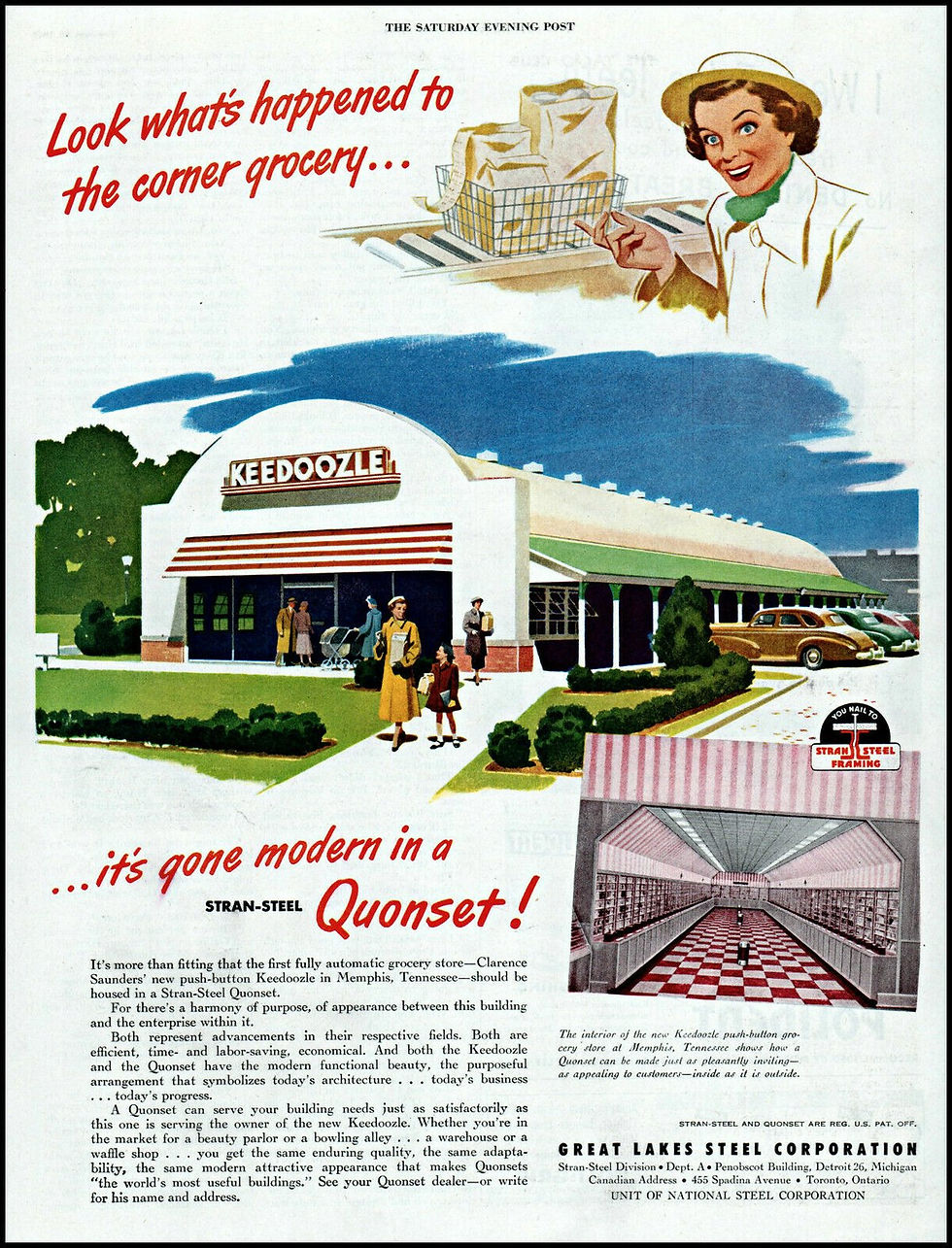Today in Brand History: The Piggly Wiggly
- Rich Honiball
- Sep 6, 2023
- 4 min read

On September 6, 1916, a retail revolution was quietly beginning in Memphis, Tennessee. Clarence Saunders, an innovative entrepreneur, founded Piggly Wiggly, a humble grocery store that would go on to change the way people shopped for groceries. While it did not open its doors until five days later due to construction delays, Piggly Wiggly's impact on the retail industry was immediate and lasting. The small store with a quirky name became the pioneer of the modern supermarket, introducing the concept of self-service grocery shopping and forever altering the way we fill our shopping carts.

The Founder of a Store that Redefined Shopping. Before founding Piggly Wiggly, Clarence Saunders had a diverse entrepreneurial background. Saunders began his career by investing in real estate. He recognized the value of owning property and acquired various parcels of land, which eventually became a source of income for him. He ventured into the poultry business, where he raised and sold chickens and eggs. This experience gave him insights into agricultural and food-related industries.
Before founding Piggly Wiggly, Saunders owned and operated several grocery stores. These early ventures allowed him to experiment with retail concepts and gather insights into the challenges and inefficiencies of traditional grocery shopping. During his time in the grocery business, Saunders began developing innovative ideas related to self-service shopping, price tagging, and organized store layouts. These concepts laid the foundation for Piggly Wiggly's groundbreaking approach to grocery retail.

The Birth of Piggly Wiggly, the Supermarket That Revolutionized Shopping: Saunders conceived the idea of Piggly Wiggly as a response to the inefficiencies and inconveniences of traditional grocery shopping. Before Piggly Wiggly, customers would hand their shopping lists to clerks who gathered the items from the shelves, often resulting in long waits and mix-ups. Saunders believed there had to be a better way.
In 1916, Saunders introduced the concept of self-service grocery shopping, a groundbreaking idea at the time. He designed a store where products were displayed on open shelves, allowing customers to browse and select items themselves. To prevent shoplifting and ensure accurate pricing, he implemented a novel system of pre-packaging and pricing each product. Shoppers were given baskets to carry their chosen goods as they moved through the store, a stark departure from the conventional counter service.

The Name Piggly Wiggly & Innovations that Shaped an Industry: One of the most distinctive aspects of Piggly Wiggly was its whimsical name. Clarence Saunders chose the name "Piggly Wiggly" after recalling seeing two pigs struggling to fit side by side through a small gate while on a train ride. The name was not only unique but also memorable, ensuring that the store stood out in the minds of consumers.
Piggly Wiggly's impact on the retail landscape extended beyond the concept of self-service. Clarence Saunders introduced several innovative practices that are now commonplace in modern supermarkets:
Price Tagging: Piggly Wiggly was the first store to display prices on individual products, eliminating the need for haggling and providing transparency in pricing.
Cash and Carry: Saunders' stores operated on a cash-and-carry basis, meaning customers paid for their groceries at the time of purchase, simplifying transactions.
Store Layout: The layout of Piggly Wiggly stores was designed for efficiency, with wide aisles and organized product categories, creating a shopping experience that was both convenient and enjoyable.
Shopping Carts: Although not initially introduced by Piggly Wiggly, the concept of shopping carts, which became integral to the supermarket experience, gained widespread acceptance thanks in part to the self-service model championed by the chain.

Rapid Expansion & Eventual Decline: Saunders' innovative approach to grocery retailing struck a chord with consumers. Piggly Wiggly stores began to proliferate, spreading rapidly across the United States. By 1922, there were over 1,200 Piggly Wiggly stores in operation. However, the success and rapid growth of Piggly Wiggly also led to legal battles and conflicts over the franchising system and the rights to the Piggly Wiggly name. In 1923, Saunders lost control of his own company in a court-ordered receivership.
Over the years, the Piggly Wiggly brand faced further challenges from competitors and changing consumer preferences. The brand fragmented into various independently owned and operated stores, which adopted different business models and strategies. While no longer the national chain it was in the early 1900s, Piggly Wiggly maintains a strong regional presence, especially in its core markets of the Carolinas and Georgia. The brand name has endured for over 100 years as an iconic Southern grocer.

Did You Know?
First Self-Service Store: Piggly Wiggly, founded by Clarence Saunders, was the world's first self-service grocery store. This innovative concept allowed customers to select their own products from store shelves, marking a significant departure from the traditional model of grocery shopping.
Unique Branding & the Pink and Green Stores: The name "Piggly Wiggly" was chosen by Saunders because he believed it was catchy and would be easy for children to remember. The whimsical name set the store apart and became an iconic part of its brand. Wiggly stores were known for their distinctive pink and green color scheme. This unique color combination helped the stores stand out and became a recognizable part of the brand's identity.
Self-Service Patent: Clarence Saunders attempted to patent the self-service grocery store concept, but his patent application was denied. This led to legal battles with competitors who adopted similar self-service models, making it a pivotal moment in retail history.
Automated Shopping: After losing control of Piggly Wiggly, Saunders introduced the "Keedoozle" concept, an automated, vending-machine-style store. Customers could use tokens to select items, pioneering a precursor to modern automated shopping systems (huh...this may require some further research).
Impact on Retail: The self-service grocery store model introduced by Piggly Wiggly revolutionized the retail industry. It not only changed how people shopped for groceries but also influenced the development of modern supermarkets and convenience stores.





Comments